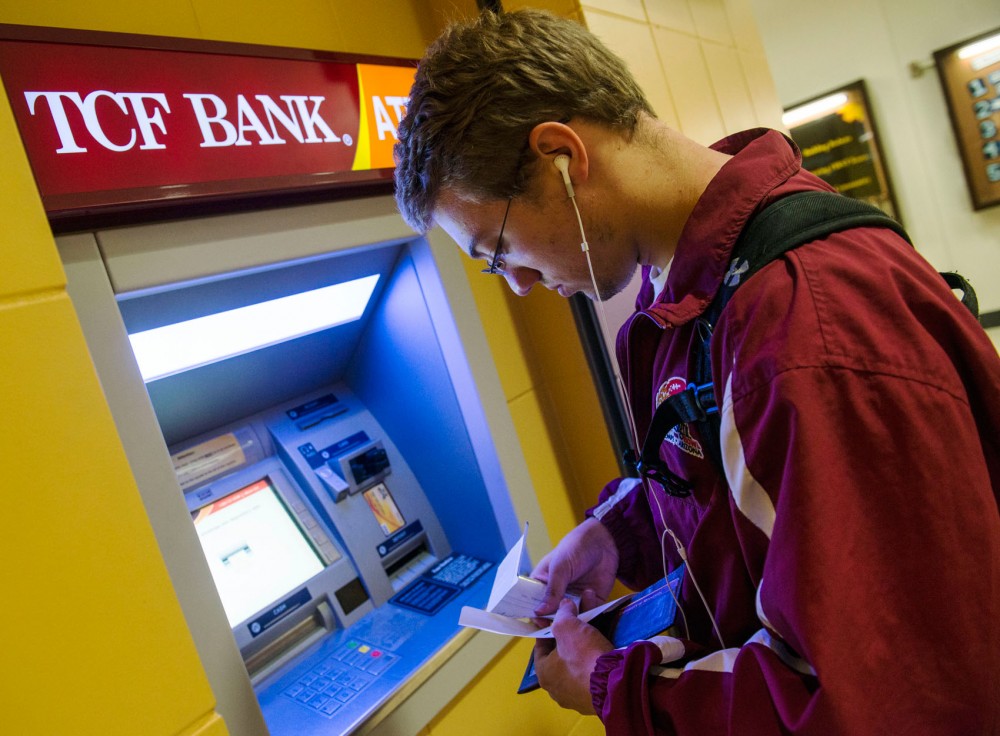University of Minnesota biology freshman Alyssa Oakman thought she needed to open a TCF Bank account in order to receive her U Card.
“That’s how they presented it at orientation, that it would be easier to have them linked,” she said. “I didn’t fully understand what was going on.”
Though TCF check cards and U Cards aren’t in fact linked, the University’s tie to TCF has recently come under scrutiny from the U.S. Consumer Financial Protection Bureau, amid larger questions about the relationships between big banks and American universities.
Many have criticized the University’s relationship with the bank for targeting students since the partnership began in 1995.
“In that time, the relationship has been scrutinized up and down,” said University spokesman Chuck Tombarge.
But if the University didn’t have the bank’s sponsorship, he said, it would lose funds for student-oriented programs like scholarships, Homecoming, the cricket team and Spring Jam.
For example, TCF must contribute $100,000 annually to the University of Minnesota Foundation for scholarships.
TCF has to pay at least $1 million to the University per year, according to its contract.
Each active U Card attached to a TCF account was assigned a value of $34 in 2013. When enough accounts were opened to total $1 million, TCF started paying the University the $34 for each subsequent account opened.
In 2013, TCF paid the University $415.25 for accounts opened. It was the first time the University made additional money from the active accounts.
Yuchen Yang, a mechanical engineering junior from China, was asked to set up a TCF account when he got his U Card freshman year.
“I had no idea where I am supposed to set up my bank account, so I said yes,” he said. “I thought that would just be easier for me, so I signed some sheet.”
Ben Burdorf heard about linking a TCF account to his U Card even before he arrived at orientation. Burdorf, a neuroscience freshman, said he saw the bank’s many advertisements around campus and talked to a lot of students who had switched to TCF. But once he got to the University, he chose to keep his current bank.
“They tried to make a point about how it would be more convenient,” Burdorf said. “They said it would be getting two birds with one stone and having it all on your U Card would be easy, since you’ll already have to use your U Card.”
The contract with the University shows TCF pays $200,000 per year for marketing on campus.
These efforts include offering free University sweatshirts to students who open TCF checking accounts.
Burdorf said the free maroon and gold merchandise didn’t persuade him to switch from his U.S. Bank account. But biomedical engineering freshman Syrus Jalali said the complimentary item influenced his decision.
“Then they said, ‘Put $50 in the account and you’ll get a free sweatshirt,’” Jalali said. “So I was like, ‘Yeah, sure.’”
Tombarge said the University is “very careful” about how TCF markets its services to students. He said he took issue with a Sept. 5 ABC News report which scrutinized the ways in which the bank is marketed to students.
“They framed it as if we have a bounty on students and are urging them to open accounts to increase the University’s payments,” he said, “which is not entirely true.”


